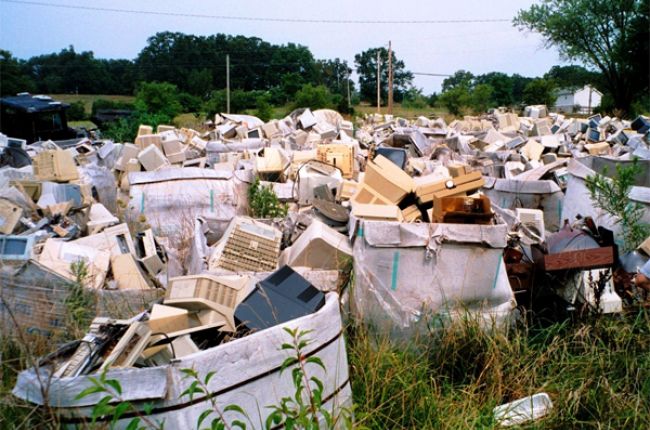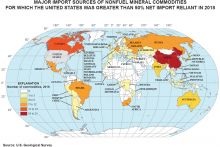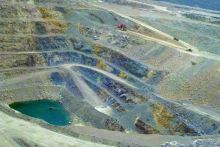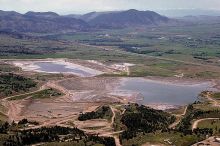
Material adapted from: Hudson, T.L, Fox, F.D., and Plumlee, G.S. 1999. Metal Mining and the Environment, p. 47. Published by the American Geosciences Institute Environmental Awareness Series. Click here to download the full handbook.
Recycling is a significant source of metals that can reduce the need for new metal mines. The amount of each metal that comes from recycling varies, however. This is for two main reasons: (1) some metals are used in ways that make it hard to recycle them, and (2) recycling systems and technologies are less efficient for some metals.
For example, the table below shows the most-recycled metals and how much they provided of U.S. supply in 2015:
|
|
Amount of Recycled Metal (Metric Tons) |
Total U.S. Supply (Metric Tons) |
Percent of U.S. Supply |
|
Iron & Steel |
52,500,000 |
106,000,000 |
50% |
|
Aluminum |
3,380,000 |
7,120,000 |
47% |
|
Copper |
805,000 |
2,450,000 |
33% |
|
Lead |
1,050,000 |
1,540,000 |
68% |
|
Zinc |
198,000 |
1,080,000 |
18% |
|
|
Data source: U.S. Geological Survey1 |
||
Although recycling is important, there is an upper limit to the amount of metal that recycling can provide. For example, recycled lead, which is predominately used in batteries and for which secondary recovery systems are well-developed, could satisfy 78% of U. S. demand, but recycled zinc will probably not increase above 35 to 40% of consumption. Even though extensive and efficient recycling is an important source of metals, metal mining and production will still be necessary to meet society’s demand for metals.
References
12015 Minerals Yearbook, U.S. Geological Survey
Learn More
- Metal Mining and the Environment (Booklet), American Geosciences Institute
Provides basic information about the mining cycle, from exploration for economic mineral deposits to mine closure. The booklet discusses the environmental aspects of metal mining and illustrates the ways science and technology assist in preventing or reducing environmental impacts.
- Recycling Statistics and Information (Webpage), U.S. Geological Survey National Minerals Information Center
Annual data on the recycling of metals, as well as fact sheets and technical reports on minerals recycling.
- Historical Statistics for Mineral and Material Commodities in the United States (Data), U.S. Geological Survey
Annual data on production, consumption, imports, exports, and recycling for approximately 90 mineral commodities, with data available as far back as 1900 for many commodities.
- Recycling as a Source of Mineral Commodities (Factsheet), American Geosciences Institute
Factsheet on the role recycling plays in the supply of metals and other materials.
- Tracking the Global Supply of Critical Materials (Webinar), American Geosciences Institute
2018 webinar detailing efforts from the U.S. and European Union to monitor the global production, trade, and usage of critical raw materials; identify and quantify vulnerabilities in supply; and support co-operation on production, recycling, and substitution of key mineral resources.







